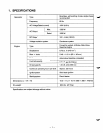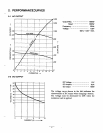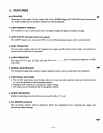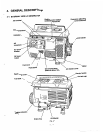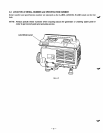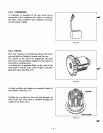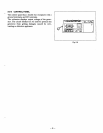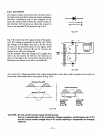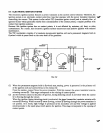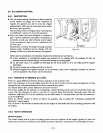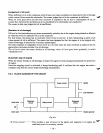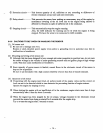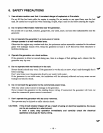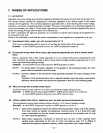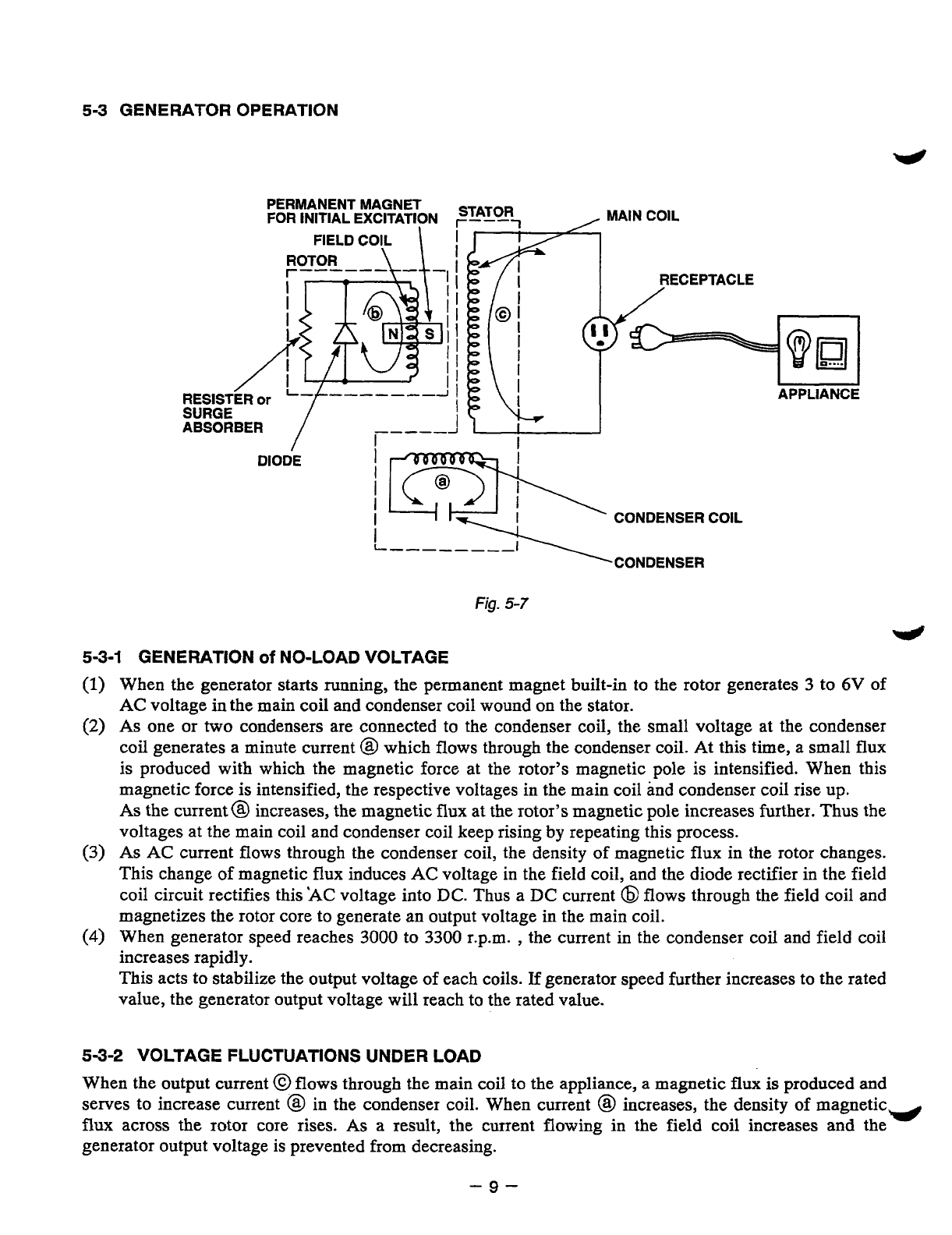
5-3
GENERATOR OPERATION
SURGE
I
ABSORBER
I
PERMANENT MAGNET
FOR
INITIAL EXCITATION
I
‘CONDENSER
Fig.
5-7
5-3-1
GENERATION
Of
NO-LOAD VOLTAGE
When the generator starts running, the permanent magnet built-in to the rotor generates
3
to
6V
of
AC voltage in the main coil and condenser coil wound on the stator.
As one or two condensers are connected to the condenser coil, the small voltage at the condenser
coil generates a minute current
@
which flows through the condenser coil. At this time, a small flux
is
produced with which the magnetic force at the rotor’s magnetic pole
is
intensified. When this
magnetic force is intensified, the respective voltages in the main coil and condenser coil rise up.
As
the current
@
increases, the magnetic flux at the rotor’s magnetic pole increases further. Thus the
voltages at the main coil and condenser coil keep rising by repeating this process.
As AC current flows through the condenser coil, the density
of
magnetic flux in the rotor changes.
This change of magnetic flux induces
AC
voltage in the field coil, and the diode rectifier in the field
coil circuit rectifies this
‘AC
voltage into
DC.
Thus a DC current
@
flows through the field coil and
magnetizes the rotor core to generate an output voltage in
the
main coil.
When generator speed reaches
3000
to
3300
r.p.m.
,
the current in
the
condenser coil and field coil
increases rapidly.
This acts to stabilize the output voltage of each coils.
If
generator speed further increases
to
the rated
value, the generator output voltage will reach to the rated value.
5-3-2
VOLTAGE FLUCTUATIONS UNDER LOAD
When the output current
@
flows through the main coil to the appliance,
a
magnetic flux
is
produced and
serves to increase current
@
in the condenser coil. When current
@
increases, the density of magnetic
flux across the rotor core rises.
As
a result, the current flowing in the field coil increases and the
generator output voltage is prevented from decreasing.
w
-9-



